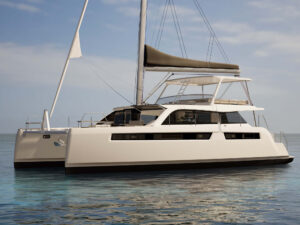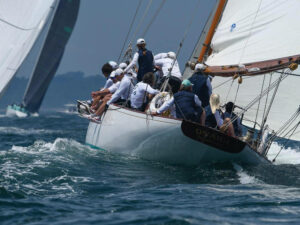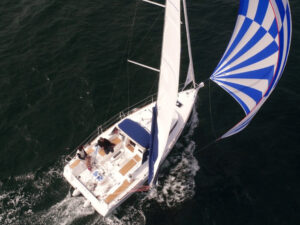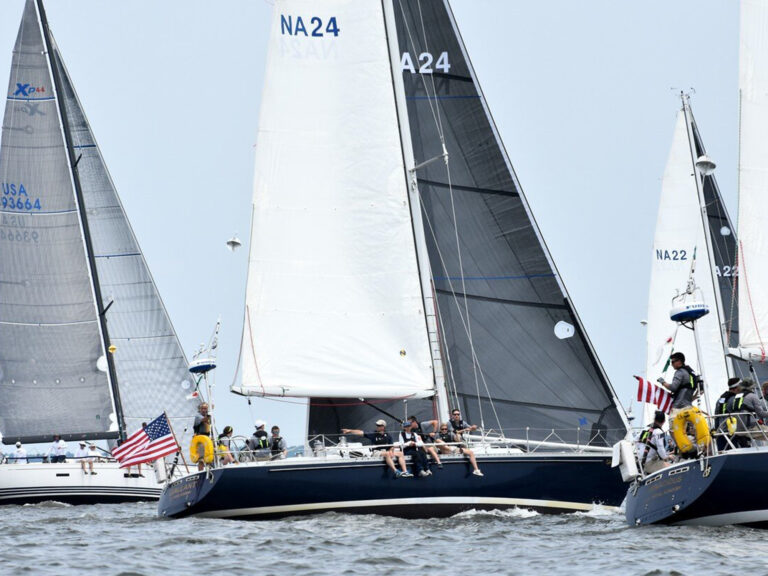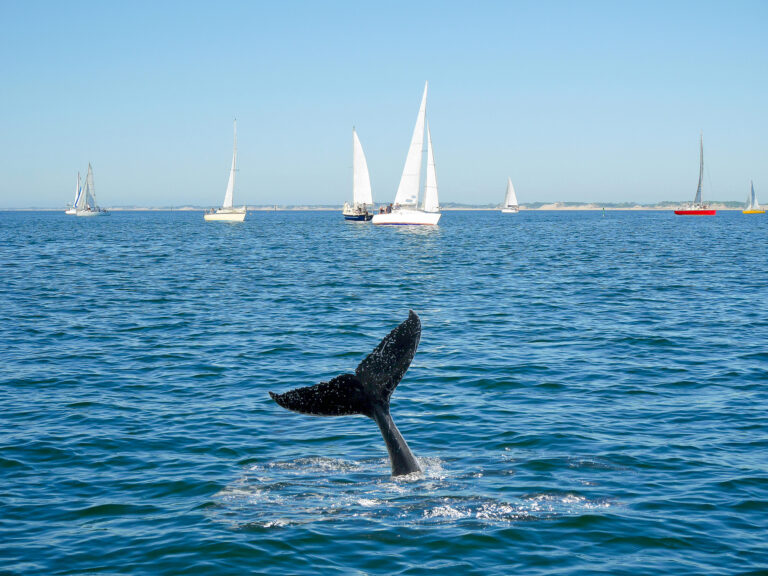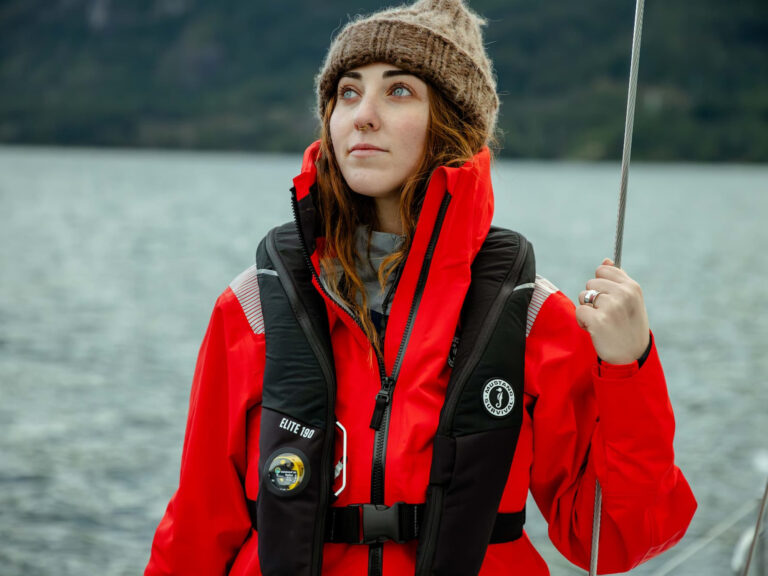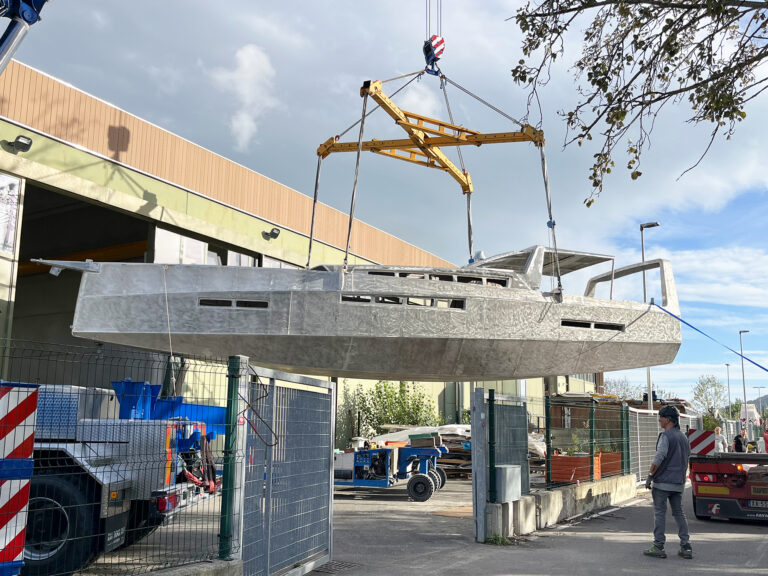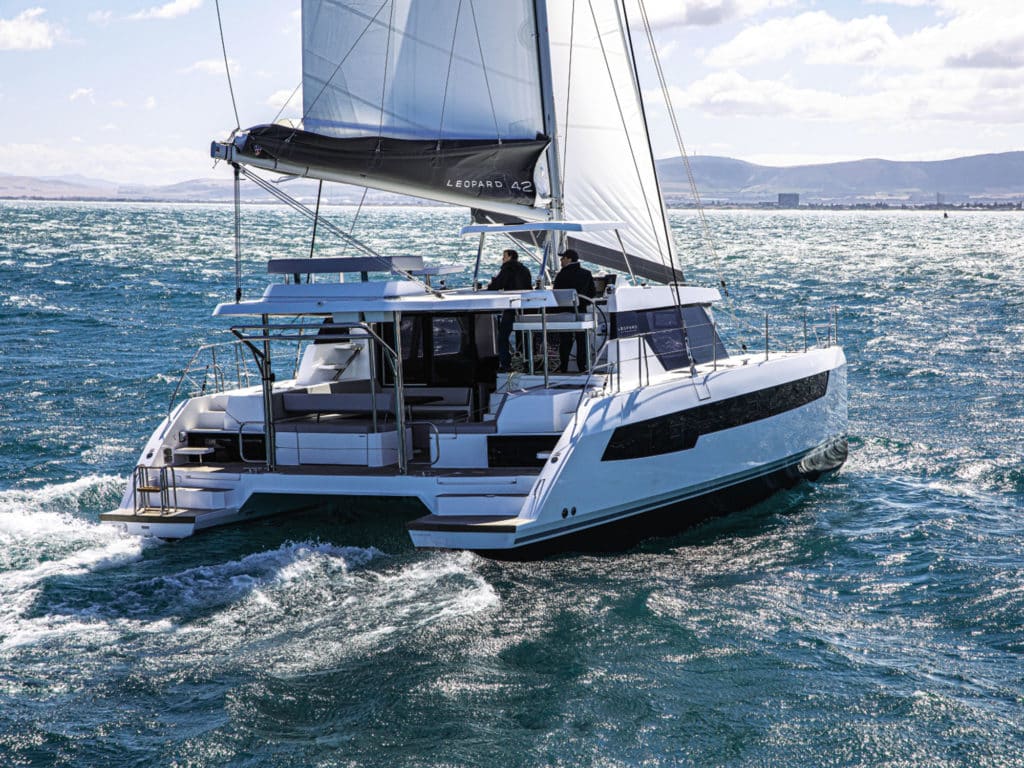
Mick Jagger was not singing about boat tests and wind speeds when he belted out the title lyrics to the classic Rolling Stones tune “You Can’t Always Get What You Want.” Far too often during many years of conducting sea trials on new boats—when you’re locked into a tight, non negotiable schedule for getting on the water—I’ve shown up just in time for a languid spell of very light air or, even worse, zippo breeze whatsoever. Definitely not what you want.
But there are also those lucky afternoons when you get what’s required for a sweet sail. Which pretty much describes the conditions this past spring when I rolled into a marina near Fort Lauderdale, Florida, for a test run aboard the new Leopard 42 catamaran, and was greeted by windswept palm trees and a stiff 20- to 25-knot easterly whipping up whitecaps on the deep blue Atlantic.
What’s the line, “When you try sometimes…you get what you need”? Exactly. And in this instance, then some.
Generally speaking, cruising cats are different than their spindly racing siblings: more tankage, more machinery, more furniture, more stuff. Which means they don’t maximize sailing performance in lighter conditions (nor are they attempting to…that’s why they’re cruising boats). But give a well-designed, well-built cat with liveaboard capabilities some legitimate air pressure to play with, and the results can be eye-popping. (Or not, frankly. Lots of wind can be too much for some lesser vessels.) Which was most certainly the case with the latest Leopard under sail in the double-digit gusts. Where she thrived.
Naval architect Alex Simonis—based near the wild, windy waters off Cape Town, South Africa—is the longtime designer of Leopard cats, and a man who relishes drafting solid boats that sail and perform exceedingly well (for proof, have another look at this month’s cover shot of a Leopard 42 hauling the mail in the shadow of iconic Table Mountain). His willing partners in this crime of nautical passion are the artisans at Robertson & Caine, the boatyard that in 2022 will build approximately 120 to 130 sailing cats ranging in size from 42 to 50 feet. It’s true that the company could probably expand production based on the current and ongoing demand for Leopards, but that would run counter to the builder’s very ethos: Quality is the aim here, not quantity.
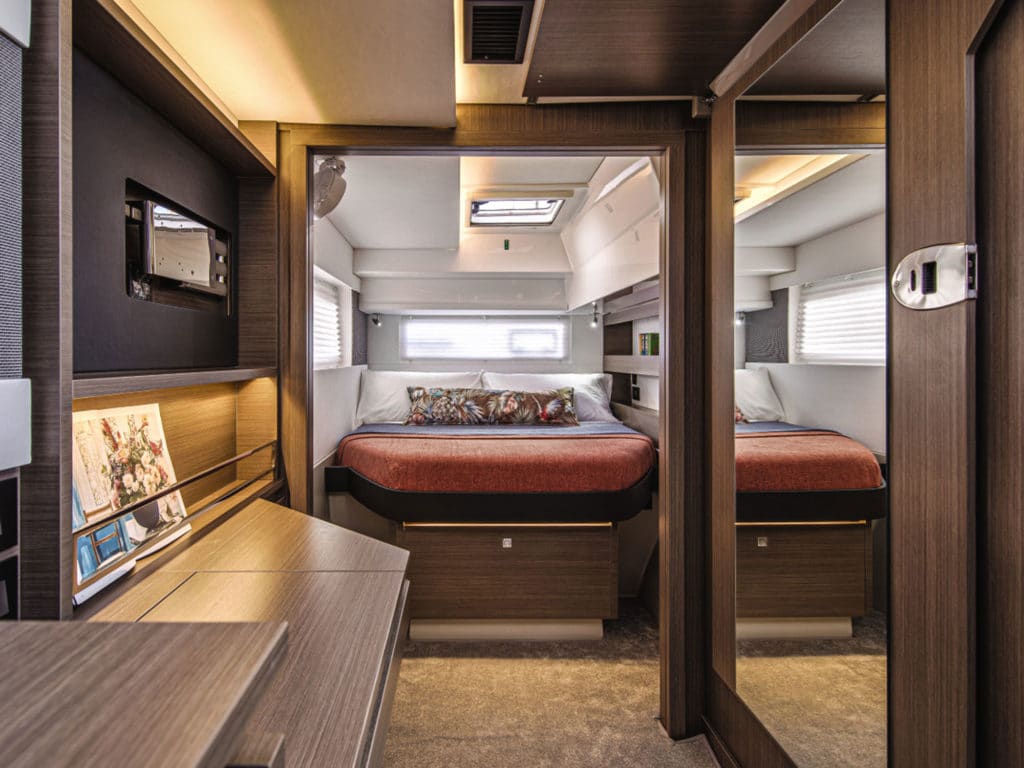
As we motored out of the inlets and into the open sea for the trials, I’ll admit that I was so relishing the sail that it never occurred to me to jot down the relevant statistics—speed, high and low RPM, etc.—for the twin 45 hp Yanmar diesels. My bad. Let’s just say we got out there smoothly and quickly.
Leopard was conducting a mini boat show at its docks in Dania Beach that upcoming weekend, so there was an all-star crew of sailmakers and company reps aboard, including Franck Bauguil, an executive at travel conglomerate Travelopia, whose brands include the privately owned Leopards, and chartering giants Sunsail and the Moorings, and whose duties include product development—a fancy title that actually means he spends a lot of time hanging with Simonis while sailing around and dreaming up cool boats. As we powered into the chop, I mentioned something about a reef, and Bauguil gave me a sidelong look of disappointment, like a resigned parent inspecting a horrible report card. Full hoist it was. As the full-battened, deeply roached, square-topped mainsail was raised, I had a brief thought about singer/songwriter Cat Power, for it was abundantly clear what was powering this darn cat.
It’s interesting to note the difference between the Leopard’s sail plan and, say, the current approach from one of the big French production-cat builders like Lagoon. In recent years, Lagoon, as a brand, has made a conscious decision to slide the entire rig aft, depending more on an expansive foretriangle for drive and grunt, and taming the entire arrangement with a self-tacking headsail. With the Leopards, including the 42, the rig remains comparably forward, and it’s the mainsail, with a relatively longer boom than a Lagoon, that supplies the muscle (we’re talking basically a low-aspect main and rig on a Leopard versus a high-aspect one on the Lagoon), aided and abetted by an overlapping 110 percent headsail that’s tacked like a traditional sailboat. I honestly can’t say if there’s a right or wrong answer here, but it’s fascinating to recognize and compare the differing philosophies.
Back in the real world, I’d ascended the four steps to the starboard helm station, which is where you’ll find the wheel on every Leopard; in such matters, these guys are unabashed creatures of habit. The surrounding view was expansive but, more pertinently, within arm’s length I had everything—and I mean everything—required to sail and command the boat: a trio of electric winches (two of which are standard), mainsheet and jib sheets and rope clutches, a nifty traveler setup, dual engine controls, chart plotter and related sailing instruments, and so on. For the most part, across the board, catamaran designers these days lay out decks with the notion and objective that it takes only one sharp sailor to run the whole bloody show, and the Leopard 42 certainly perfects that concept.
After motoring off the coast for sea room, we hardened up to a close reach, and matters became extremely interesting, not to mention noisy and blowy. Which was great. The cat trucked along at a solid 8.5 knots, but what struck me the most was how solid and steadfast she felt as she cleaved through the chop; the sensation of the twin hulls of a fine cat in exquisite balance really does feel like a freight train on its rails.

But the real fun happens when you crack off and free up the wind angle, and the Leopard leaped at the course change and eased sheets, flirting with 10 knots on a screaming reach. We did have a bit of a fire drill when a blast of wind caught the corner of the furled code zero—which then, of course, started to totally unfurl—and I got my day’s cardio helping drop and corral the beast on the trampolines. Extremely good times.
Back at the dock, all systems once again calm and shipshape, I had a chance to wander the decks and interior. The look and feel of the features and accoutrements are totally modern, as in ultra-contemporary (more than once in my notebook the word “angular” appears). The profile is enhanced by tinted, continuous side windows in the hull, and the coach roof segues into the hard Bimini that’s carried aft and canopies the cockpit. Up top—on the penthouse, so to speak—there’s an inviting lounge space. There’s a marvelous afterdeck and swim platform, features for which I have an extremely soft spot. The cockpit has a fine-dining area to port, opposite the helm.
The galley is forward in the roomy central cabin, with the dining table aft to port. The 42 doesn’t have the forward cockpit employed on larger models, but there is a watertight front doovate owner’s cabin to starboard (with desk, vanity, flat-screen TV, huge head, etc.) and a pair of staterooms to port, but you can spec out the interior in multiple ways: tr that leads to a pair of sun lounges, the tramps, and an optional fixed bowsprit if you’re going with the performance package that includes the code zero. Our test boat had the pretty awesome private owner’s cabin to starboard (with desk, vanity, flat-screen TV, huge head, etc.) and a pair of staterooms to port, but you can spec out the interior in multiple ways: three or four cabins, three or four heads, six or eight berths, three or four showers. The four-cabin, four-head configuration is likely what you’ll find if you charter one; about half the production run is bound for the bareboat fleets.
The Leopard 42 replaces the Leopard 40 in the brand’s quiver, and is certainly a more substantial ride in every notable way. The only problem, really, is that as the world emerges from these pandemic times, they’re going fast. The 42 might be quick, but if you want one, you need to be even quicker.
Specifications Leopard 42
| LENGTH OVERALL | 41’7″ (12.67 m) |
|---|---|
| WATERLINE LENGTH | 40’10” (12.4 m) |
| BEAM | 23’1″ (7.04 m) |
| DRAFT | 4’7″ (1.4 m) |
| BRIDGEDECK CLEARANCE | 2’6″ (0.75 m) |
| SAIL AREA (STANDARD) | 1,217 sq. ft. (113 sq. m) |
| DISPLACEMENT (Light ship) | 27,485 lb. (12,467 kg.) |
| DISPLACEMENT/LENGTH | 179 |
| SAIL AREA/DISPLACEMENT | 21.4 |
| WATER | 174 gal. (660 L) |
| FUEL | 158 gal. (600 L) |
| MAST HEIGHT | 67’10” (20.7 m) |
| ENGINE SPECIFICATIONS | Twin 45 hp Yanmars with saildrives |
| DESIGNER | Simonis & Voogd |
| PRICE (fully equipped and delivered) | $689,000 |
Sea Trial
| Wind speed | 20 to 24 knots |
|---|---|
| Sea state | Choppy |
| Sailing | Closehauled 8.5 knots/ Reaching 9.8 knots |
| Motoring | Cruise: N/A/ Fast: N/A |
Herb McCormick is CW’s executive editor.


